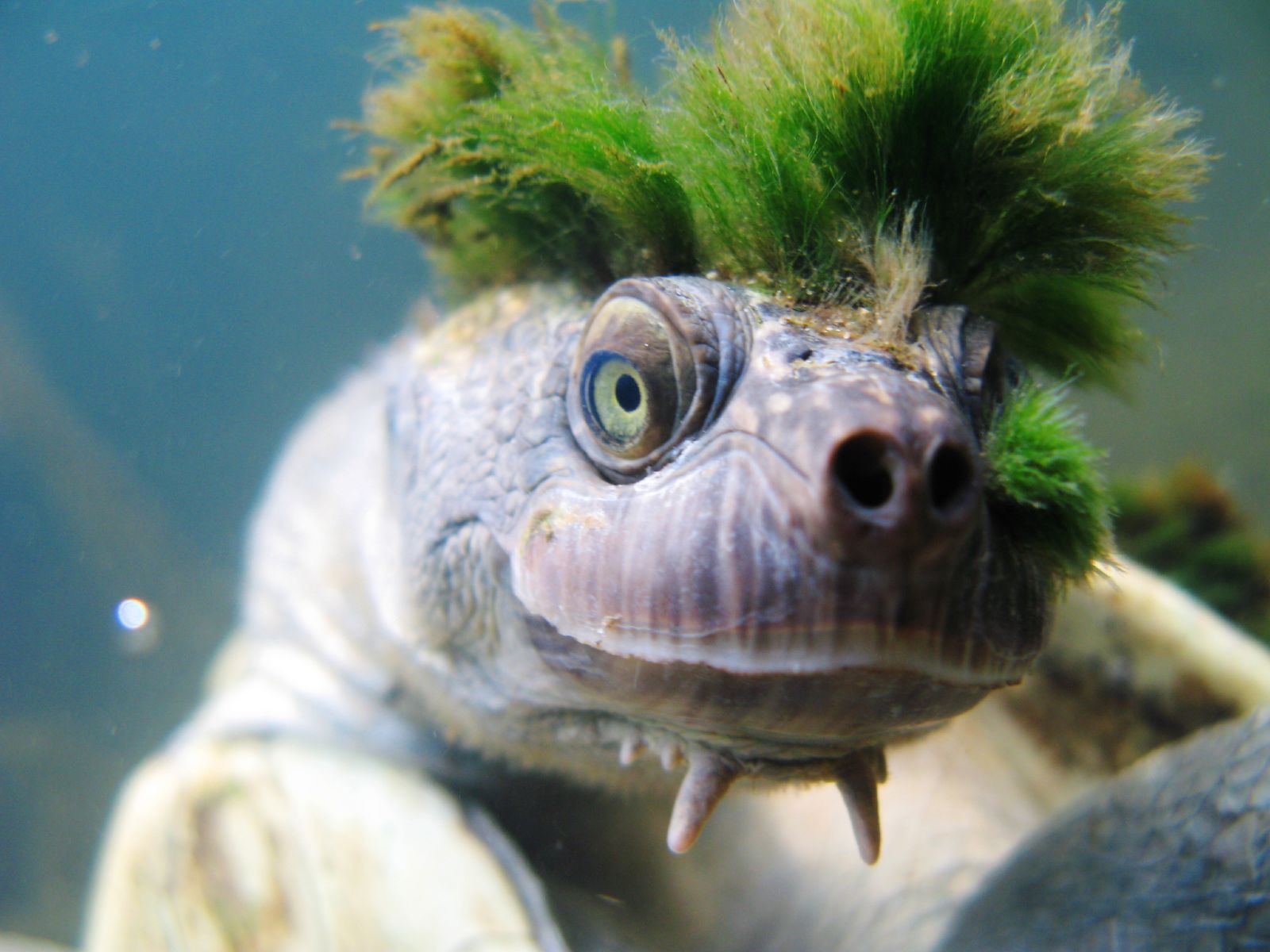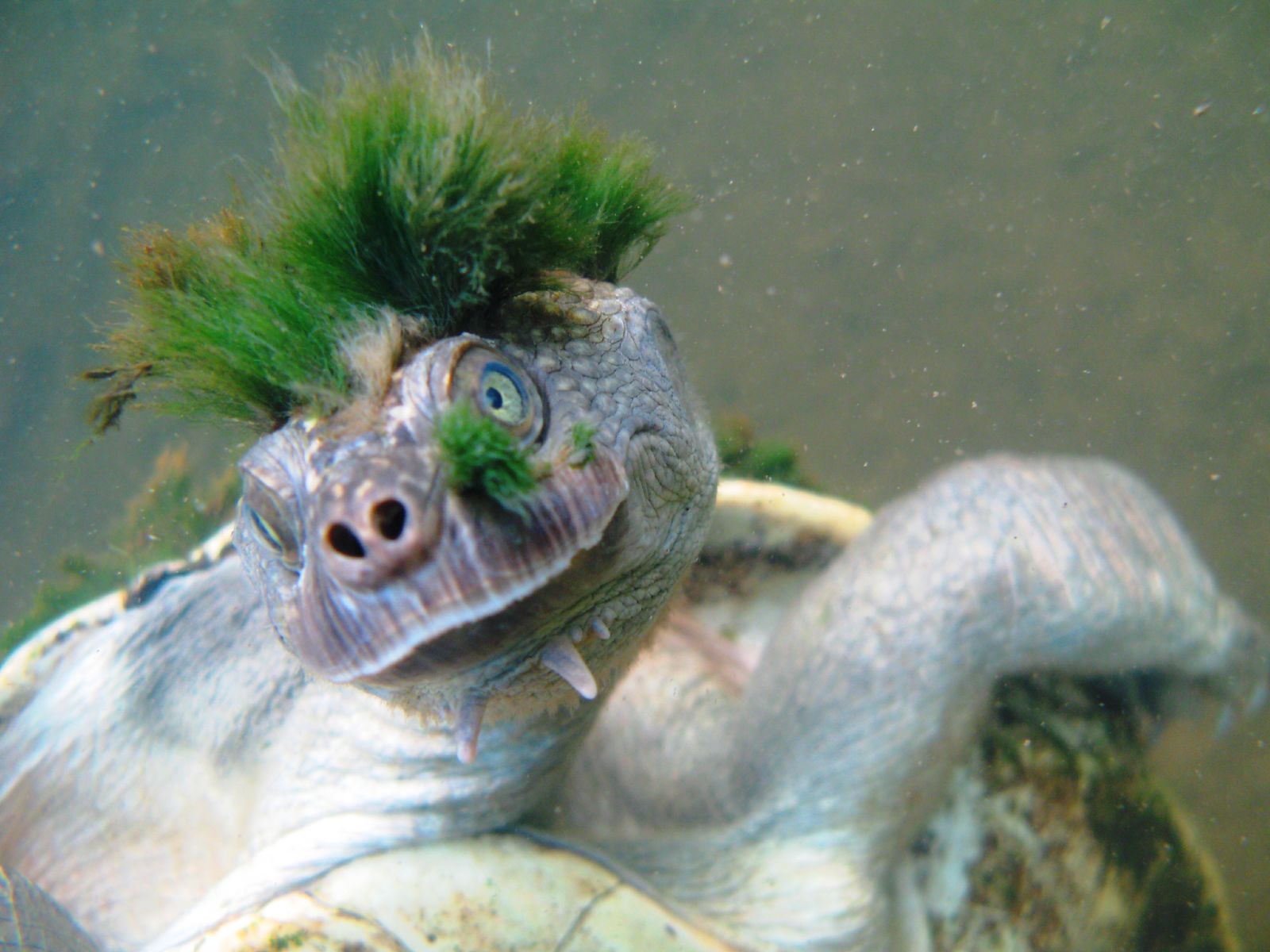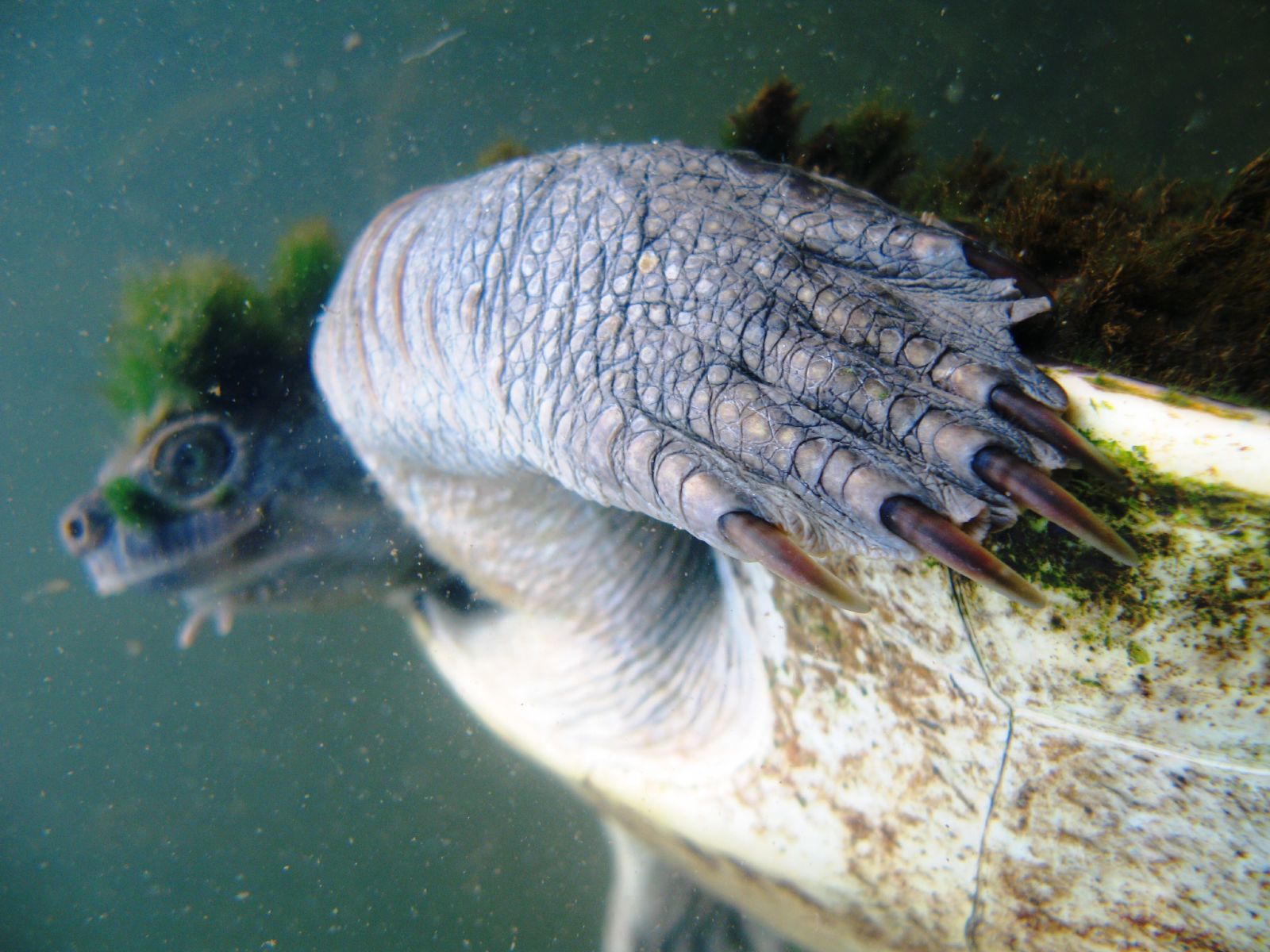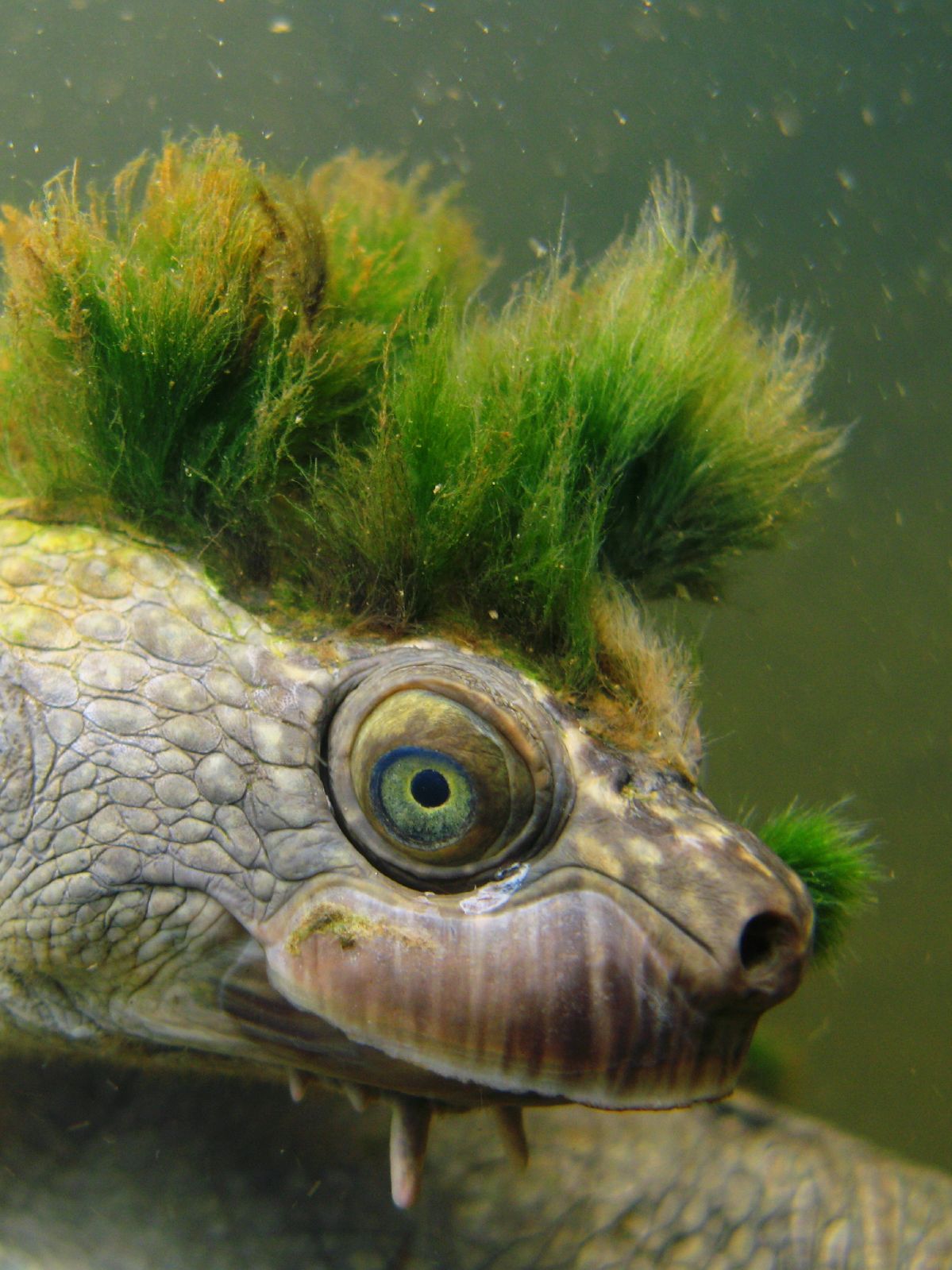Photographer Chris van Wyk garnered viral success with his pictures of an algae-covered “punk” Mary River turtle. The media attention he purposefully generated affected decisions related to preserving the habitat of this unique species.
 The Mary River turtle breathes in a special way, earning it the nickname “bum-breather”. Image courtesy of Chris van Wyk
The Mary River turtle breathes in a special way, earning it the nickname “bum-breather”. Image courtesy of Chris van Wyk
The now iconic Mary River turtle is just one of the many species endemic to the Mary River flowing in Queensland, Australia. This exceptional animal breathes underwater using specialized glands in its reproductive organs, allowing it to remain submerged for up to 72 hours – an unusual feature in a reptile, which earned it the name “bum-breather”. In 2009, the Queensland government made plans to dam the river at the Traveston Crossing, effectively dividing the natural range of the Mary River turtle and destroying much of its prime breeding habitat.
The plans upset van Wyk, who was still learning photography a time, so he decided to something about it. He went down to the river and spent an entire day in the water wearing a wetsuit, taking hundreds of terrible images while his limbs went numb and turned blue from the cold. But then, he got lucky. Suddenly, he encountered an animal with a full head of green algae “hair,” grown in mohawk style. Just the right subject for a glamour shot of the turtle he planned to do so that viewers can relate to it and realize the importance of preserving the species.
 After unsuccessfully trying to get a good shot of the animal for a day, the photographer finally encountered this specimen wearing its “hair” in mohawk style. A good subject to save the species. Image courtesy of Chris van Wyk
After unsuccessfully trying to get a good shot of the animal for a day, the photographer finally encountered this specimen wearing its “hair” in mohawk style. A good subject to save the species. Image courtesy of Chris van Wyk
Excited with the results, van Wyk shared the photos with local newspapers and social media with the intention of having them distributed as widely as possible. Then, some of the campaigners fighting the dam contacted him to use the images to make postcards and posters to raise awareness. Eventually, one of the photos went viral.
In the end, the decision of Queensland’s government to build the dam was overruled by federal environment minister Peter Garrett. The decision was published alongside the viral photo. For some time at least, the species was saved.
 Site of proposed Traveston Crossing Dam – exactly the turtle’s habitat. Photo credit: Patrick McCully
Site of proposed Traveston Crossing Dam – exactly the turtle’s habitat. Photo credit: Patrick McCully
This wasn’t the first time the Mary River turtle was saved from extinction though. Back in the 1960s and ’70s, these animals were sold as “penny turtles” throughout Australia, without people actually knowing where they were coming from. In fact, the species hadn’t even been discovered by science or properly described, and it almost went extinct before that could happen. Besides being sold as pets, decades of cattle grazing, tree felling and sand mining along the river’s banks had degraded water quality, endangering their habitat.
At last, Sydney-based reptile expert John Cann realized the little turtle being sold as a Christmas gift in NSW and Victoria was actually a species unknown to science. (In those times, the wildlife trade had its own flawed code of ethics and dealers refused to provide details of their suppliers.) Cann became obsessed with identifying the species, and for two decades he relentlessly searched for its origins in hundreds of Australian river systems and in Papua New Guinea.
 For two decades of so, Mary River turtles were sold as “penny turtles”, almost making the species extinct. Image courtesy of Chris van Wyk
For two decades of so, Mary River turtles were sold as “penny turtles”, almost making the species extinct. Image courtesy of Chris van Wyk
Finally, in 1984 the Victorian government banned the selling of freshwater turtle hatchlings with a shell length less than 100 mm, effectively stopping the harvest and trading of Mary River turtles. That also meant there was no longer a need to keep its origin as a secret by wildlife traders and John eventually tracked the species down to the town of Maryborough, whereabouts the animal’s habitat can be found.
That was when the turtle was saved from extinction for the first time.
 Will the punk of the turtle world survive? It’s up to us. Image courtesy of Chris van Wyk
Will the punk of the turtle world survive? It’s up to us. Image courtesy of Chris van Wyk
The battle for the Mary River turtle continues, however. Although it has now been saved from the detrimental effects of the dam, its future is by no means secured. Much more has to be done before we can safely say that the punk of the turtle world will indeed survive.
Sources: earthlymission.com








